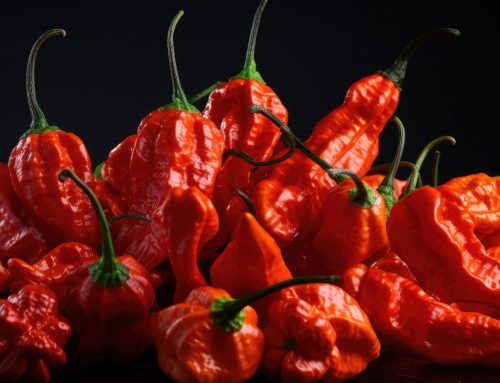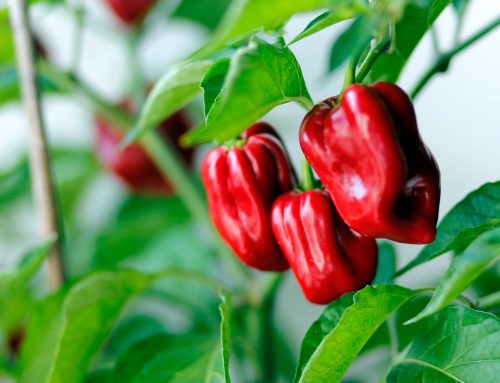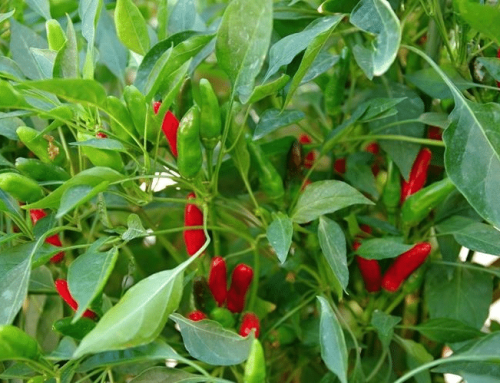We have all seen the videos. Unsuspecting individuals taking a bite of the Carolina Reaper sauce-coated wing, laughing nervously for about two seconds before spiraling into a puddle of sweat, hiccups, and panic. The “2.2 million Scoville Heat Units” doesn’t exactly paint a picture of what your stomach, throat, or nervous system is about to go through when you introduce your palate to a Reaper.
But how bad could it be? After all, you have handled habaneros, crushed some Thai chilies, even tackled a ghost pepper once or twice. What does it really feel like to ingest one of nature’s most aggressive peppers? How long does the peak last?
Before you decide to experiment with Reaper powder or flakes in your kitchen, it’s important to know what you are signing up for.
👉Also Read: A Complete Guide to the Scoville Scale and Scoville Heat Units (SHUs)
What is the Scoville Rating of Carolina Reaper
The Scoville Heat Unit (SHU) rating doesn’t measure “spiciness” in the way most people think. It quantifies the concentration of capsaicinoids (particularly capsaicin and dihydrocapsaicin) that are responsible for triggering the TRPV1 receptor (aka the pain receptor) in the human nervous system.
Originally developed in 1912, the test relied on human taste testers who diluted pepper extracts until the heat was no longer detectable. Today, SHUs are calculated using High-Performance Liquid Chromatography (HPLC) to provide a more precise and chemical-based measurement.
The Carolina Reaper averages 1.6 million SHU, with peaks over 2.2 million, placing it well into the “superhot” category. But SHU only gives you part of the picture. It doesn’t measure how quickly the heat hits your senses, how long it lingers, or how it interacts with sugars, esters, or volatile oils in the dish you are eating. All of these elements are obviously just as important in a culinary sense.
For example, since the Reaper contains a high ratio of dihydrocapsaicin to capsaicin, it tends to produce a slower-building but longer-lasting burn. So, if you are consuming a chili oil or fermented mash, the delayed punch can sneak up on you. Even more so if you’ve paired it with sweet or creamy ingredients to mask the intensity.
After working with pepper breeders across the world and analyzing capsaicinoid profiles across hundreds of samples, our team at Magic Plant Farms realized that what makes Reaper chilies different is their “thermal persistence”. While a Ghost Pepper (Bhut Jolokia) delivers its punch in a sharp, almost metallic wave that peaks around 2-3 minutes, the Reaper operates on an entirely different timeline. Its heat not only hits harder, but it restructures how your pain receptors respond.
This happens because the high concentrations of vanillylamide compounds (better known as capsaicinoids) in Reapers are the same molecules that make the heat stick to the mucous membranes in your mouth. Trinidad Scorpions have similar peak SHU ratings, but their capsaicinoid profile is completely different, which is why Scorpion heat feels more sharp while Reaper heat feels more all-enveloping.
Is Anything Hotter Than Carolina Reaper?
When comparing the Carolina Reaper to other superhots, you have to think about their different profiles in terms of capsaicinoid ratio, volatile aromatics, and sugar content, to give you an idea about the different SHU levels:
- Ghost Pepper (Bhut Jolokia): 500,000 – 800,000 SHUs
- Trinidad Moruga Scorpion: 800,000 – 1,500,000 SHUs
- 7 Pot varieties: 750,000 – 1,200,000 SHUs
- Carolina Reaper: 800,000 – 1,500,000 SHUs
Carolina Reaper is unique in the sense that it integrates excellently with fats, acids, and umami flavors. There are not many superhot peppers that have a multi-dimensional burn with a variety of flavor notes (fruitiness, sweetness, smokiness).
Beyond the sheer SHUs, here is how the Reaper stacks up against some of its closest competitors:
The Moruga is intense, averaging around 800,000 to 1,500,000 and producing a fast-acting heat that peaks within 10 to 20 seconds, compared to the slower, delayed onset of a Reaper. If you are building heat into, say, a spicy snack, where you want the customers to feel it quickly and move on, the Moruga might be your pepper. The Reaper, by contrast, is better for recipes where you want a cumulative, lingering burn that develops one bite at a time.
Also, the Trinidad Moruga has a slightly grainy texture when used in mash or puree form, which affects the mouthfeel if not properly strained or blended. The Reaper is smoother by comparison and tends to emulsify more cleanly into sauces and oils.
One of the most underrated peppers on the list, the 7 Pot Douglah ranges between 750,000 – 1,200,000 SHU and carries a more earthy, chocolatey flavor. Chemically, it leans heavier on non-volatile phenolic compounds that give it a bitter, almost toasted undertones.
It’s fantastic in spice blends for rubs or mole-style sauces but doesn’t play as well with fruit-forward or acid-heavy applications like a Reaper does. If you are looking for an insanely hot pepper to pair with your tomato bases, tropical fruits, or vinegar-based marinades, Reaper would be a better choice.
This one shares a similar Scoville range with the Reaper, but its heat is slightly harsher on the taste buds. The 7 Pot Primo feels more one-dimensional in terms of burn because it has a high ratio of capsaicin to other capsaicinoids. It will give you that burn, but it lacks the multi-layered heat curve that you get with Carolina Reaper peppers. Carolina Reapers are much better suited for meat glazes, compound butters, and infused oils, where the fat content amplifies the burn, and the flavor compounds can unfold over time.
A hybrid of several superhots, the Naga Viper sits around 600,000 – 800,000 SHU and brings a noticeably floral and slightly soapy profile due to a higher concentration of linalool terpene. If used in micro-doses, it can really lift your citrus-based sauces and fermented chutneys; in high doses, it could clash with some of the savory profiles.
Compared to the Reaper, the heat of a Naga Viper feels drier and less rounded. It feels abrasive and astringent, like it’s scraping across your palate instead of blending in. It tends to fade relatively quickly without evolving.
They are not as hot as Carolina Reaper, but each still has culinary relevance. Dorset Naga, for instance, has a more predictable heat curve and a clean, almost fermented fruit note, making it ideal for fermented hot sauces. Red Savina is extremely useful in commercial settings because of its higher sugar content and vibrant color, even though its SHU is modest by extremely hot standards (250,000 – 500,000). Although it does lack the richer, deeper burn and a broader aromatic profile of Reapers.
If you want a pepper that will evolve slowly and complement smoked meats, Reaper peppers are a better fit than most other options. If you are building a multi-layered sauce that includes both sweetness and acidity, the Reaper gives you more room to play with background heat while letting fruit esters (e.g., mango or pineapple) come through. Reapers are also more easily soluble with oils, so they are great for making chili butter, aioli, cheese sauces, and other fat-based recipes.
Choosing the Right Carolina Reaper Product for Your Needs
This is the most concentrated and shelf-stable format of the Reaper, made by dehydrating the hot peppers and grinding them into a fine powder. Because of the extremely high surface area-to-volume ratio, the capsaicinoids are rapidly released and absorbed during cooking. Even small amounts bloom immediately when introduced to heat or oil.
Powdered Reaper goes well with:
- Dry rubs for grilled and smoked meats
- Snack coatings (chips, popcorn, nuts)
- Spice and seasoning blends
- Dusting on jerky
- Bakery applications (spicy chocolate, savory crackers)
- Ready-to-mix dry soup or ramen flavor bases
- Heat-boosting ingredient in curry powders and taco seasonings
But keep in mind that heat degrades capsaicin in prolonged high-temperature cooking. So, if you are adding a little powder quantity for Carolina Reaper to stews or sauces, do it near the end to preserve its full intensity.
And if you like Sriracha as much as Carolina Reaper but have never experienced what happens when they are properly married, you may want to try Magic Plant Farms’ Carolina Reaper Sriracha Powder. We have combined the fermented tang of Sriracha with the fruit notes in the Reaper (with a good dose of garlic, sugar, and vinegar!) to give you smoky goodness you never knew existed.
Larger and more textural than powder, flakes retain part of the cellular matrix of the pepper. This slows down the extreme heat release a bit more and allows all the flavors to emerge more organically. The bursts of heat build slowly as the flakes rehydrate. Carolina Reaper flakes also keep the volatile oils that escape during powder processing. This is great for:
- Visual toppings (for ramen, pizza, noodle bowls)
- Oil infusions (chili oils, garlic Reaper oil)
- Jerky and sausage coatings (for delayed heat)
- Spicy compound butters and finishing salts
- Granular spice crusts for seared proteins (e.g., ahi tuna, tofu)
- Rehydrated into sauces and chutneys
- Ethnic stews for slow flavor release (e.g., Ethiopian, Thai)
That said, Reaper flakes have SHU inconsistencies because capsaicin is not evenly distributed in the pepper’s flesh. That makes them less reliable for ultra-precise dosing.
This is a pre-cooked, finely milled blend of Reaper peppers, stabilized with vinegar or citric acid. It’s ideal when you are working in an acidic or emulsified system; think ketchup-style bases, mayo, and BBQ sauces. It’s much more pH-stable and heat-emulsifiable than flakes.
Pureed Carolina Reapers from Magic Plant Farms are best for:
- Hot sauces (vinegar- or citrus-based)
- BBQ glazes or wing sauces
- Wet marinades for meats and seafood
- Spicy mayo, aioli, and remoulade bases
- Bloody Mary mixes and cocktail syrups
- Stir-fry sauces and noodle dressings
- Dips and spreads (e.g., hummus, labneh, cream cheese blends)
The whole dried pod is the most versatile but also the least forgiving format. When you rehydrate or roast these, you are unleashing every component of the pepper, including:
- The outer skin (a lot of floral terpenes),
- The placenta (the lion’s share of capsaicin),
- And the seeds (which, despite popular belief, are not the source of heat, but do carry bitterness)
You can extract specific compounds through oil infusions, ethanol tinctures, or CO₂ extraction for food-safe concentrates. Rehydrated pods can be blended into chunky sauces or used in spice pastes for Indian, Thai, and Ethiopian cuisines. You can customize the flavors and SHUs depending on how you prep the dried Reapers through toasting, soaking, and grinding.
All that work does give you the maximum amount of control over the heat, which is great for:
- Steeping in stocks, broths, and oils for controlled heat infusion
- Grinding fresh for custom spice formulations
- Smoking and toasting
- Homemade chili pastes and infused vinegars
- Flavoring small-batch craft sauces and salsas
- Rehydrating for stuffing or stew additions
- Spicy liqueurs and bitters (infused spirits, shrubs)
👉Also Read: Buying Bulk & Wholesale Peppers: What to Look for in Your Supplier
Get Authentic Carolina Reaper Products Direct from Certified Growers
Whether you’re a home chef exploring face-melting heat or a commercial manufacturer needing a consistent supply, Magic Plant Farms delivers genuine Carolina Reaper products – dried Carolina Reaper pods, Carolina Reaper paste, mash, powder, flakes, and more – that meet the highest quality standards. Our collection of the world’s hottest peppers is organically grown and processed under strict GMP, HACCP, and SQF certifications, so every purchase from single packets to bulk orders maintains the same legendary heat and fruity flavor profile. Call 877-801-9733 or contact us online for samples, pricing, and custom orders.









